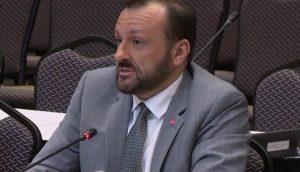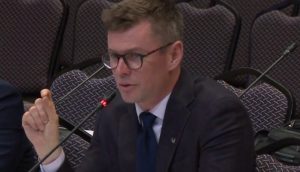If the future does “belong to the most awesome” as Faris Yakob said, we think he has a pretty good shot of sticking around.
The chief innovation officer at MDC Partners and co-founder of its boutique agency Spies & Assassins was speaking at a recent talk put on by the Broadcast Research Council of Canada, on the points of speed, change and technology, and how the advertising and media industries have to adapt.
Bringing in psychology, economics and even a little medicine (to explain how a video can’t actually be viral – if no one watched your online spot, it wouldn’t spread on its own), Yakob said the reason things seem like they are moving so fast in today’s culture is because, well, they are.
Yakob cited an article he wrote for Fast Company in 2009, which said that the rate at which things move now is essentially zero. News like the death of Steve Jobs breaks on Twitter on a Wednesday evening and is already old news by the time it hits the national media outlets that night. There are a few reasons for this says Yakob, one being Moore’s law, which in addition to affecting the speed at which microchip-based technologies multiply, also has an impact on media because of its heavy reliance on the various platforms.
Speed and including the user are both of utmost importance, says Yakob, using examples like Kraft Dinner’s recent campaign by MDC Partner agency CP+B, which took tweets about the brand as content, turning the spots around in time for the prime-time shows to hit the airwaves the day they were tweeted.
“The average production cycle for a TV spot is nine months, one way agencies can speed things up is to do something like Kraft Dinner did,” he says. “Collapsing the distinction between agencies and production cycles and just getting it out there fast. But that isn’t sustainable in the long term. Brands can also keep up by creating something that can bring in real-time information from tweets, or their Facebook page. Instead of thinking of a campaign like a discreet thing, think of it as an architecture that gets fed by Twitter or Facebook. One of the biggest challenges we face as an industry is how to move things faster.”
Yakob says agencies need to start recognizing that media is now made up of both stock (things that stay the same over time), and flow (things that vary). One of the biggest mistake companies can make is thinking that things like TV and the internet are disconnected, the way platforms used to be.
“It has been proven that if you put an ad on TV people are going to search for your brand more online, he says. “Since that is going to happen it occurs to me that you should guide people as to where to go. Right now brands keep putting Twitter and Facebook icons in their ads and saying ‘follow us!’ As Gary Vee said at SXSW that is akin to putting a phone in your ad and saying give us a call. You need to give people a place to go and a reason to go there.”
Yakob also talked about changes happening to the very way people find and use content, noting how location-based music site Spotify is now inserting the music its users listen to into their Facebook news streams, allowing friends to constantly find the content.
“The problem with Google TV was that people needed to know what they wanted to be able to find it,” he says. “Searching through hundreds of channels is not a good user experience. If Facebook made a TV service, now that would be interesting. People could see what their friends were watching.”
MiC caught up with Yakob after his talk to pick his brain on what inspires him to do his best (and speediest) work.
[iframe_vimeo video=”30667723″]
Videography by Jennifer Horn























